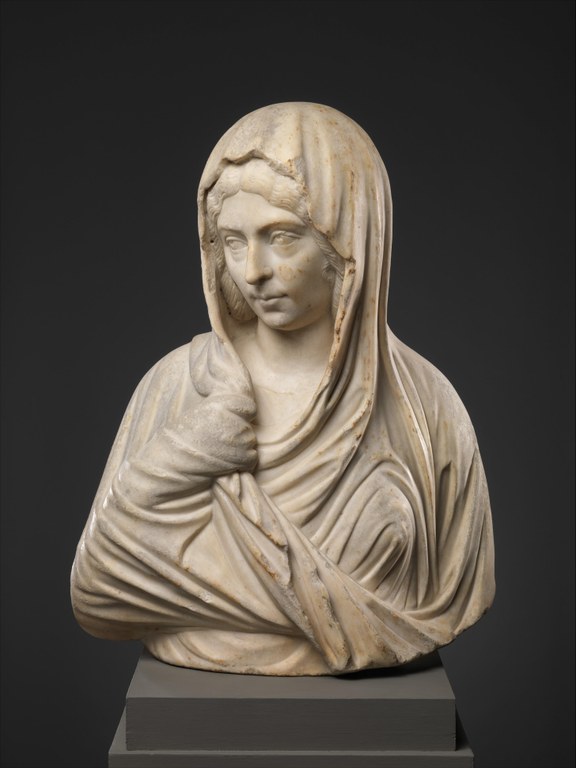Faculty Focus: Claire Bubb
 Bust of a veiled woman. Roman, 193–211 CE. Marble. Said to be from the Greek islands. H. 66 cm. Metropolitan Museum of Art: Fletcher Fund, 1930; 30.11.11. Photo: Metropolitan Museum of Art. Public domain.
Bust of a veiled woman. Roman, 193–211 CE. Marble. Said to be from the Greek islands. H. 66 cm. Metropolitan Museum of Art: Fletcher Fund, 1930; 30.11.11. Photo: Metropolitan Museum of Art. Public domain.
Bringing Galen to Life
Illustrating the slides for lectures about Galen is a perennial difficulty: there are no ancient images or objects directly associated with the physician. Therefore, the main challenge facing the curatorial team for our new digital exhibition on his life and world—setting aside the manifold technical challenges of pivoting to a brand-new medium in the middle of a pandemic, which fell to the ever-capable Clare Fitzgerald—was to weave the abundant material from Galen’s textual legacy into dialogue with as many images as possible, both from antiquity and from the rich legacy of Greco-Roman medicine over the centuries.
Our digital platform allowed us to approach this challenge in a variety of stimulating ways. We were able to dive deeper into texts than would normally be possible in a museum context, leveraging images to make them come to life. The melancholy bust of a veiled woman, for example, renders the case history of one of Galen’s modest female patients doubly evocative. It was also possible to get a little playful with the material. The intricate woodcuts that accompanied early modern editions of Galen are often too dense to be visually accessible; not only did we have space to unpack the stories behind them, we were also able to literally bring them to life in an animated “preview” to entice the audience. One of the most fun aspects of the project for me as an academic specialist was working with our wonderful writer, Rachel Herschman, to create a quiz-style game, allowing visitors to determine their Galenic constitution. The levity of the format and the aptness of the images enliven material that actually derives directly from one of Galen’s drier medical treatises, drawing our audience into a deeper familiarity with the ancient world and its medical beliefs than they might otherwise have found.